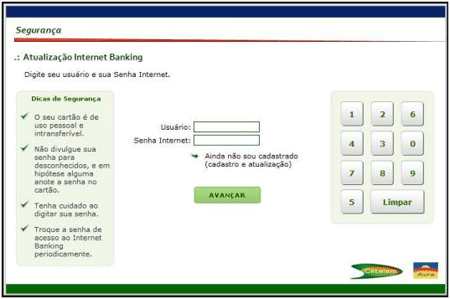TROJ_THINSTAL.GM
Windows 98, ME, NT, 2000, XP, Server 2003


Threat Type: Trojan
Destructiveness: No
Encrypted:
In the wild: Yes
OVERVIEW
This Trojan may be dropped by other malware. It may be unknowingly downloaded by a user while visiting malicious websites.
It attempts to steal information, such as user names and passwords, used when logging into certain banking or finance-related websites. It attempts to steal sensitive online banking information, such as user names and passwords. This routine risks the exposure of the user's account information, which may then lead to the unauthorized use of the stolen data.
TECHNICAL DETAILS
552412 bytes
Yes
17 Dec 2009
Arrival Details
This Trojan may be dropped by other malware.
It may be unknowingly downloaded by a user while visiting malicious websites.
Information Theft
This Trojan
- http://www.{BLOCKED}icro.com/vinfo/images/cet1.gif
When the user clicks the Continue button, another window asks for user name and password.

When the user clicks the Continue button, it prompts for information that can be seen on the card.

It attempts to steal information from the following banks and/or other financial institutions:
- Credito Cetelem
It attempts to steal sensitive online banking information, such as user names and passwords. This routine risks the exposure of the user's account information, which may then lead to the unauthorized use of the stolen data.
Stolen Information
This Trojan sends the data it gathers to the following email addresses via SMTP:
- cetelinorecebe@isbt.{BLOCKED}m.br
- cetelinosmtp@isbt.{BLOCKED}m.br
Other Details
This Trojan did not exhibit backdoor routines during testing.
Variant Information
This Trojan has the following SHA1 hashes:
- 915bbe9458a212528893d55bdb0900e385ec8fde
It has the following MD5 hashes:
- 4d0ba7959ccb5615d4a735ea1aeea876
SOLUTION
5.997.00
29 Apr 2009
Step 1
For Windows ME and XP users, before doing any scans, please make sure you disable System Restore to allow full scanning of your computer.
Step 2
Scan your computer with your Trend Micro product to delete files detected as
*Note: If the detected files have already been cleaned, deleted, or quarantined by your Trend Micro product, no further step is required. You may opt to simply delete the quarantined files. Please check this Knowledge Base page for more information.
Did this description help? Tell us how we did.

